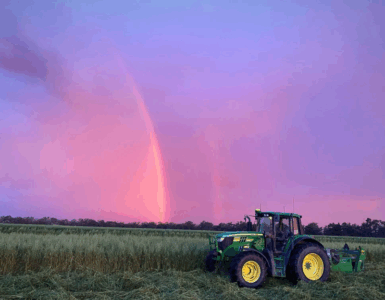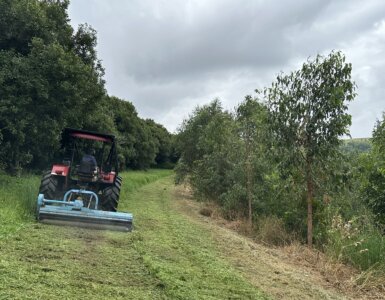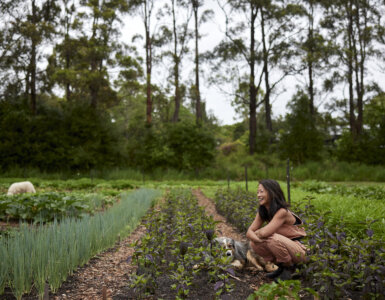Mention ultrafine wool and thoughts generally run to Merino sheep but on the far south coast of New South Wales Julie and Peter McClen are on the leading edge of breeding ultrafine alpacas.
The Oak Grove Alpaca stud is situated near Candelo on a portion of what was the historic Kameruka Estate. Settled in 1834 Kameruka was famous for its dairies and cheese but in 1850 moves were made to import alpacas from Peru to produce the fine, luxurious fibre for which they were famous.
The idea did not eventuate but fast forward 150 years to 2001 and the McClens began to fulfil the prophecy. Today, in lieu of Merinos and eucalypts, 40 to 50 alpacas graze beneath 100-year-old English elms and oaks.

“We grew up in western Sydney and had bred show dogs, so had an understanding of animal husbandry, but eventually we wanted to move to a rural area,” Julie says of the impetus that brought them to 10 hectares on the Sapphire Coast. “Then we had to work out what we were going to do with it.”
Alpacas appealed to us because they were a new and emerging industry and that gave us the opportunity to make a difference.”
The McClens breed a mix of white to brown Huacaya alpacas that have a crimping fleece, and Peter and Julie have embarked upon a mission to produce animals with ultrafine wool, which in the alpaca world is defined as less than 18 microns.
Like Merinos, ultrafine alpaca wool attracts premium prices around the globe but alpaca fibres tend to thicken, or “blow out”, with age. To overcome this problem the McClens endeavour to breed genetically fine alpacas whose fleece resists micron blow out, hence the Oak Grove tag – Ultrafine, Stay Fine.

Producing some of Australia’s finest fleece
To promote ultrafine wool Julie and Peter were among a group of breeders who established Alpaca Ultimate and in 2006 the organisation produced Australia’s first bale of less than 18 microns. “That was cutting edge,” Julie says. Now Oak Grove consistently produces ultrafine wool, which sells for the premium price of $60/kg. For every two micron increment the price drops by $10/kg.
The finest wool the stud has produced was from a two-year-old female that averaged 11.7 microns (with a 2.8 standard deviation). “I’ve always been interested in pushing the envelope and now we are breeding alpacas that produce some of the finest alpaca fleece in Australia,” Julie says.
Learning the lingo
Getting to know alpacas requires a whole new vocabulary. The young are called cria, the males orgle (a guttural vocal sound) when mating to induce ovulation and birth is called unpacking. Though many people are attracted to these camelids for the “cuteness” factor and their reputation as guard animals Julie cites environmental benefits to keeping alpacas.
“A study [presented at the International Farm Management Congress 2003] has shown they have less pounds-per-square-inch impact on the earth than a kangaroo.
They don’t have hooves; they have padded feet with toe-nails, so they don’t impact the soil like cattle or horses.”
“They don’t have hooves; they have padded feet with toenails, so they don’t impact the soil like cattle or horses. They don’t pull grass out by the roots, they don’t ringbark trees and they use a communal dung heap, which minimises waterway contamination and worm burden,” she says.
Long pregnancy
“They are also low maintenance. The amount of regular husbandry we do per animal – drenching, shearing, nail trimming etc – would not equate to one day per year and they don’t tend to test fences like other livestock.”
Yet, a 340-day gestation period can be one of the downsides to raising alpacas.
You have to wait nearly a year for a cria. You won’t breed alpacas quickly, it’s a slow process.”
Oak Grove sells alpaca fleece, guard and pet animals but its strength is breeding quality stud stock for the production of fine wool. “We are in the pioneering days of the alpaca industry and most of our buyers are looking to improve the fineness of their herd,” Julie says. “We breed for genetically fine alpacas whose fleece will stay fine over time.”
Move over Merinos, the alpacas are unpacking.








































Add comment